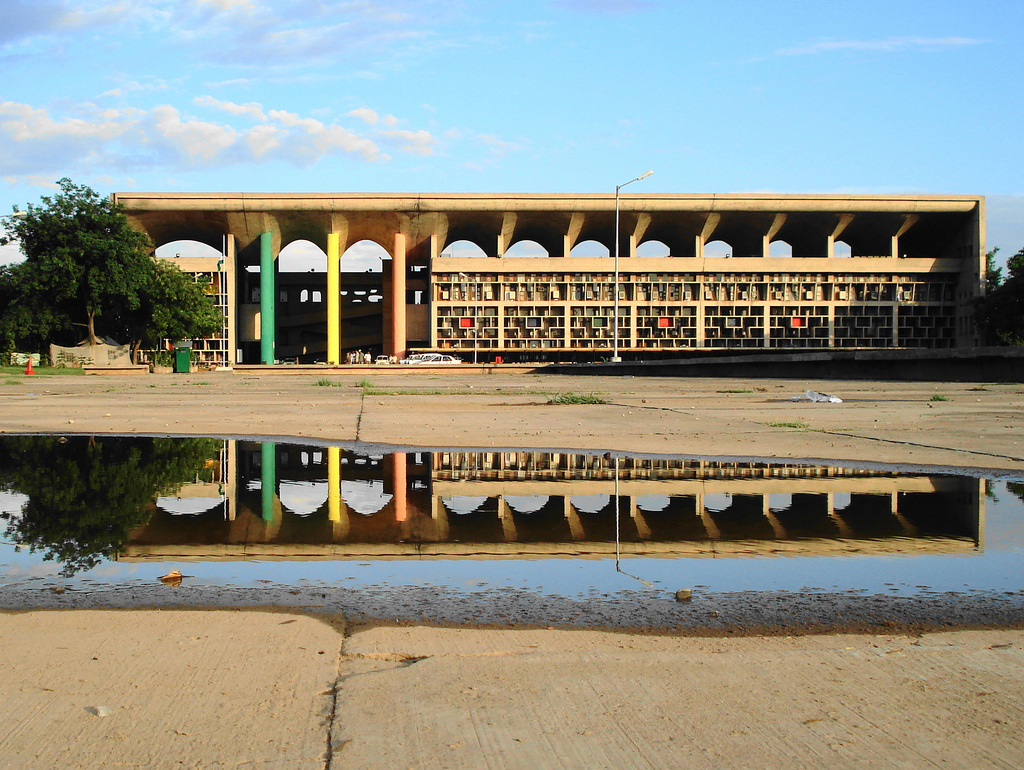Chandigarh
Dear friends of Chandigarh & 20C-Heritage,
Having lived in Chandigarh since 1977, having worked proactively on conserving Chandigarh’s heritage since 1997 — besides being the only ISC20C member from India — I should apparently be best qualified to comment on the entire issue of repeated auction of Chandigarh furniture outside India, and, the seemingly indifferent stance of the Indian government & Chandigarh Administration.
The story is somewhat complex. Most aspects – such as little understanding of values of Modern heritage, lack of technical competence, administrative apathy & obduracy, etc. – are common with all instances of early resistance to notions of conserving 20-C heritage. Otherfactors, though incredible & senseless, have also contributed to the prevailing confused situation, and, have perhaps caused loss of precious time that could have been better utilized for well-directed safe-guarding efforts. These ‘special’ factors have, in fact, given me a fairly harrowing time for over a year, and it is with a lot of mixed feelings that I am sharing these with you all.
Let me try and touch upon the key issues that have been raised —
1.- How could Chandigarh (& India) allow the export of these artifacts?
1.1.- Most of the auctioned items are furniture pieces designed during 1950s & 60s for the numerous early buildings (government offices, schools, hospitals, student hostels, et al) in Chandigarh, the same type-design were mass-produced in very large quantities. By around 1980s-90s, most offices had discarded them as redundant, irrepairable or old-fashioned, and these were routinely auctioned off by the offices along with other ‘unserviceable’ articles.
1.2.- Around 1997-98 (just when I had just started documenting Chandigarh) we heard reports about the high prices some Frenchmen were paying for the discarded furniture during government auctions. Over the next few years, these men became a familiar sight, buying everything they could from various sources. As the city (including the architects who were part of the first team) was yet to accept the notion of ‘modern’ as ‘heritage’, and as the entire city was literally strewn with large quantities of such ‘discarded’ old furniture, most people viewed the buyers simply as quirks with money to burn.Chandigarh still does understand why such high prices are being paid for what it considers as ‘junk’.
1.3.- Very obviously, the furniture was not listed as ‘heritage’ or protected by law. Inquiries have also revealed that the buyers took all possible precautions to procure & export it legally. Therefore, protests by the Administration have not been of any use, especially since these have been made almost a decade after the artifacts were willingly sold by the Administration itself.
2.- Efforts & Results: 2003-2007:
2.1.- Starting around 2003, I began to draw Chandigarh Administration’s attention to the urgent need to preserve Chandigarh’s ‘movable heritage’ (especially L-C’s tapestries and documents related to the history of the city), setting up an organization similar to the Fondation Le Corbusier, and, a dedicated department to take care of all heritage related work. A couple of projects were begun, but soon fell through, either due to official apathy or petty politicking.
2.2.- The first big auction by the “Artcurial”, Paris took place around June 2007. Anticipating being party to the L-C nomination, the Administration agreed to start listing the city’s ‘movable heritage’. This project never took off.
2.3.- Several auctions followed in quick succession, each prompting dramatic news reports, but failing to elicit action by Chandigarh Administration – perhaps as, by now, most people associated with the Chandigarh Heritage Project had moved out of the Administration.
3.- The turning point – good or bad?
3.1.- Following another Artcurial auction in February 2010 the Administration was spurred into a flurry of action – not due to any concern for the cultural loss suffered by the city or protection of its heritage, but due to allegations against me of theft of government property and its sale to the auction house! A number of my good friends (read as sworn enemies) had got together to concoct stories aimed to bring me down from my high horse and ensure that I never got anywhere near the ‘heritage circuit’. Curiously, a Frenchman became the centrepiece of this as well.
3.2.- While I went through a fairly harrowing time for over a year and though the completion of my book on L-C’s work in Chandigarh has been stalled (Rohit & Michel are already aware of some of this), the good part of the entire episode is that the Administration has ordered a comprehensive inventory of all movable artifacts all over the city (even though, identification of ‘heritage furniture’ is based on the images found in various auction catalogues, such as the ones attached to Gunny Harboe’s mail!)
3.3.- The Administration is also now wondering how best to manage this large quantity of old furniture that no one seems to want in their offices. Once again, since no conservation architect or a 20-C heritage expert has been involved, it is very likely that provisions of Article 1.2 of the Madrid Document will go unnoticed. No attention seems to have paid to my opinion (similar to article 1.2) published recently in the local press.
4.- What needs to be done now?
4.1.- One of the first things is to impress upon the Administration / Government of India the need to employ trained professionals for managing the city’s heritage, and set aside some funds for it. The present Heritage Committee has not associated any conservation professional, and its decisions seem very arbitrary and unprofessional.
4.2.- Simultaneous effort also needs to be made to convey the values of 20-C heritage & the special approach needed to conserve it.
4.3.- Since the issue of the WH nomination is also critical, a campaign for this is also needed. The project seems to have been shelved indefinitely for some unexplained reasons.
4.4.- I am personally very concerned about the plight of L-C’s tapestries, which are truly irreplaceable and under severe threat. Something urgent needs to be done on a war footing. I am attaching an article written in 2004, just after we’d managed to convince the Administration to conserve them. Matters are much worse now.
5.- Who should we approach?
5.1.- In a government setup like Chandigarh, the top-down approach will work best, so we have to convince the top boss.
5.2.- How do we do this – through ICOMOS, INTACH (Indian National trust for Art & Cultural heritage)? Rohit & I can discuss this on his next visit home.


